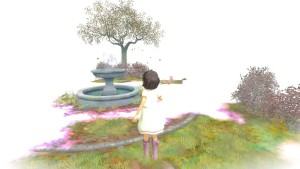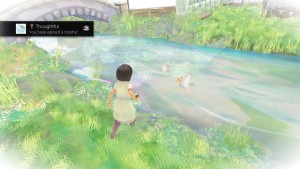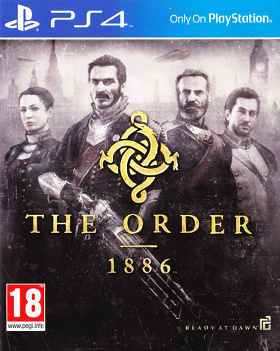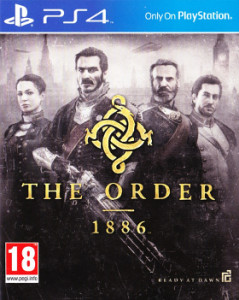
Developer: Ready At Dawn
First Release: 20th February, 2015
Version Played: PS4
Length: Medium
The Order: 1886 is a steampunk game set in London. The Order is a group of knights, named for the original knights of the round table, who prolong their lives by drinking blackwater from the grail. Their mission is to fight the half-breeds (such as the lycans… werewolves by another name).
Though the game has some shooter and stealth elements, it’s mainly about the story. That makes it a good place to start when discussing the game, as this is likely to make or break whether someone enjoys it.
Story
The story follows Sir Galahad, starting with the prologue where he’s being held prisoner by the Order, and flashing back to what led to this. In the flashback, a lot of things are happening in London. The poor are rebelling against oppression. A killer (Jack the Ripper) is targeting prostitutes. The patients of a mental asylum have broken out, and there’s suspicion of a lycan connection. The knights have a lot to deal with, but not everything is as it seems.
Anyone expecting a more common action game narrative of defeating the big bad and saving the day is likely to be disappointed, as it’s not that sort of story. It’s more about Galahad’s personal journey, as he discovers things aren’t as black and white as he assumed, and has to decide where he stands.
One thing I look for in steampunk is how colonial themes are tackled. Some stories are prone to glorifying the British Empire and all it did. The Order doesn’t. Some of the characters certainly think that way, but it’s clear to the player that the poor join the rebellion out of desperation for how they’re treated. The authorities are doing little about the murdered women, and something odd was going down at the asylum.
The supernatural elements are shown as taking advantage of the British Empire’s expansion, rather than being responsible for it. A subtle difference, but an important one, as blaming it all on magic is a common way for stories to avoid addressing history.
In terms of inclusion, there are two Indian women who are important to the story. However, I would have liked to see a wider racial mix among the inhabitants of Whitechapel. At this point in history (and there’s no suggestion that the game version is any different) people moved to London from all parts of the Empire. Few would make it into the upper classes (such as the knights), but the poor workers would be more diverse.
The biggest issue with the story was not developing some of the characters and subplots. The collectables would have been a good way to introduce more information about the things going on at the asylum and hospital. The knights visit a brothel, which makes sense as prostitutes are being targeted by Jack the Ripper. But they don’t actually talk to anyone to find out more about that, which seems like a wasted opportunity. These things could have been fleshed out without giving away everything. And in turn, a little more story in the subplots would have given more space to develop the characters.
Overall though, I enjoyed the story. It was the gameplay where my reaction was more lukewarm.
Gameplay
The shooter parts of the game were solid. It’s cover-based shooting, with a variety of weapons. There are a number of fun science weapons, designed by Tesla (though I would have liked more time to explode things with these). I also liked the tools, such as the lockpicking, morse code sender and circuit breaker. These could have been used more, such as having some puzzles that required them, but the basic mechanism for how they worked was fine. If this was all the gameplay, it would have been fun.
Unfortunately, the game also had quick time events. These can be fiddly for someone like me, as my coordination isn’t the best, and reacting quickly to onscreen prompts is difficult. I could at least retry the cutscenes with quick time events, so I got there eventually. The stopping point was the stealth takedowns. Rather than sneaking up and hitting the takedown key, it has rings around the button prompt. Only at the precise moment the rings hit the prompt, and the buttons highlights, can the takedown be performed successfully. Failure means total failure, as Galahad forgets how to fight if they turn around to face him. Which meant I failed as often as I succeeded. This was hard enough when I had to perform two takedowns in a row. But a later chapter with multiple takedowns was extremely difficult, and not in a fun challenging way. I thought I wouldn’t be able to complete the game due to that chapter. I can’t imagine why any developer would think it was fun to fail, and fail, and fail, and fail, for hours on end. So my assumption is they didn’t consider that quick time events can be a problem for people (I’d note that using an easy difficulty only seems to change the gun fights, not the reaction time for quick time events).
Subtitles
The subtitles had some issues. They were a little small for a start. Fine on the big screen I’m using, but I feel for anyone using them on a smaller screen.
I often got no subtitles for a conversation happening next to me, but at the same time I got subtitles for a conversation happened elsewhere. I would have also liked non-translated subtitles to go with dialogue in other languages (this was especially strange when the French character used the odd French word in mostly English dialogue, and the subtitles translated it… I wanted to know what he actually said).
The game was pretty free of bugs, though I did find one with the subtitles. I picked up a newspaper while a conversation was happening, and the subtitles got stuck on the screen.
It does feel like they needed a tester who uses subtitles regularly.
Graphics and Polish
The game’s graphics are as good as the promotion promised them to be. It sets a high bar for photorealistic games. Outside of my subtitle bug, I didn’t find anything else amiss. There was no getting stuck on geometry, trophies failing to award, save file corruption or other issues of that nature. It was clearly polished to a high standard.
As someone who likes collectables, I would have liked them to have more additional lore in them. I also would have liked a collectables log, so I could track them. The basic system for collectibles is really nice (Galahad can pick them up and look them over), so the potential is there.
No game is perfect, but this one certainly gives the feel of hitting what the developers set out to do.
Conclusions
The Order: 1886 is a beautiful game, with an interesting setting and storyline. It will appeal to steampunk fans, with its airships, Tesla devices and other trappings. For someone who is good at quick time events, it will be a quick play with easy trophies. However, I don’t recommend it for anyone who struggles with quick time events, as the chapters with multiple stealth takedowns will be frustratingly difficult.
I’m on the fence about whether I’d get another game in the series. The stealth takedowns were the least fun I’ve had in a game for a long while, and I’m not sure the story is going to be enough to sign up for that.
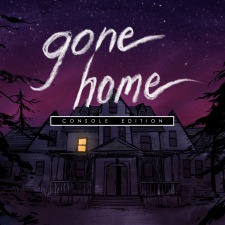 Developer: The Fullbright Company
Developer: The Fullbright Company Developer: Krillbite Studio
Developer: Krillbite Studio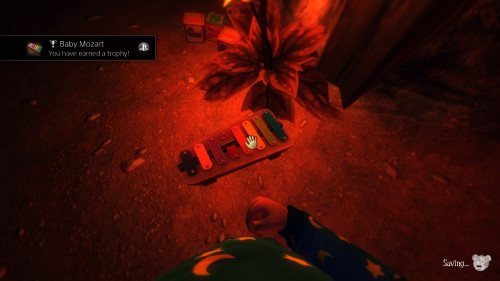
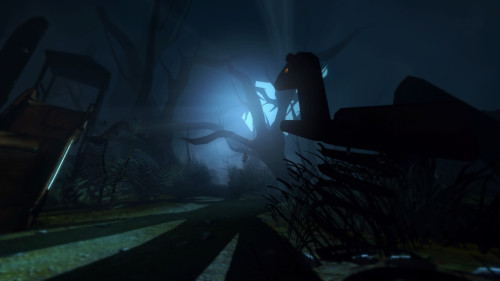
 Developer: Nostatic Software
Developer: Nostatic Software
